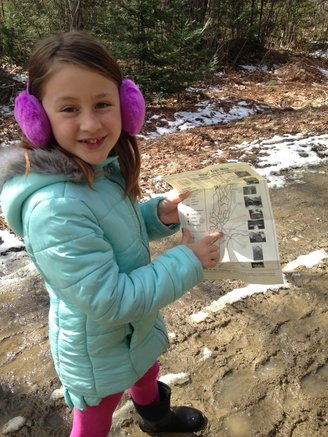Why It is So Important to Get Students Engaged and Connected to Nature and their Community.1/19/2017 As an educator who has worked in public and private schools I have seen the positive effects of nature and community learning on student engagement and their health and wellbeing, I have also seen what happens when all their learning happens inside of four walls. When they are confined from exploring the natural world around them on a daily basis behavioral issues arise. Their interest in learning diminishes and they become less physical and connected to themselves and they community. Children who are growing need to move their bodies at least 60 minutes a day; less that 45% of boys and 30% of girls get this on a daily basis. Organized sports and physical education are essential but we need to incorporate not only structured physical activity but unstructured time outside for them to move, explore and problem solve without guidance. When they get this time, they can breathe fresh air, work cooperatively together, create their own games or build structures and garden or walk in nature. This is time where you can also incorporate academic learning that mixes with unstructured play. The key question is how. How can teachers in public schools, who are already tasked with disseminating curriculum and measuring the students works against standards, be expected to find the time to do this work. The lynch pin is integration and team teaching. It is ok to start small and spiral upwards as you build fluidity and confidence in the process. Not all schools have nature out their back door, but most have within walking distance, parks, church gardens, community businesses and even neighborhood community gardens.
 These are just a few simple ways to start. But what about creating a project like designing a nature space on the school grounds that would incorporate design thinking( How are we going to use the space in the best way? What steps do we need to take to make that happen?), cooperative learning ( who is going to do what and how are the steps going to get done?) learning about survey and mapping skills, scale, directions and angles, researching the history of the place, reaching out to community members who might be experts, writing up a plan. Integrating curriculum around a project or a problem is the next level of connecting the students to their learning environment and community. The next step is giving them freedom to explore and create their own project by giving them the standards they need to master and then having them create with your guidance a learning experience that will get them where they need to be. This might involve interviews with peers, teachers or community members, it might have them building something by using simple machines and basic hand tools, it might be a natural history of the school grounds or a community park. The ideas are endless and just need to be given the breathing room and the container to bloom and flourish. It can be done but it involves team work, initiative and and retooling the process.
We all want our students and children to love to learn, to be engaged in their own discoveries and to gain the skills that they truly need to succeed in the 21st century. We can do that by expanding their classroom, engaging them through discovery and giving them the tools to design, converse and be an active part of this evolving world.
0 Comments
|
Posted by AndreaParkerThe Rejuvenation Grange Archives
February 2019
Categories |



 RSS Feed
RSS Feed